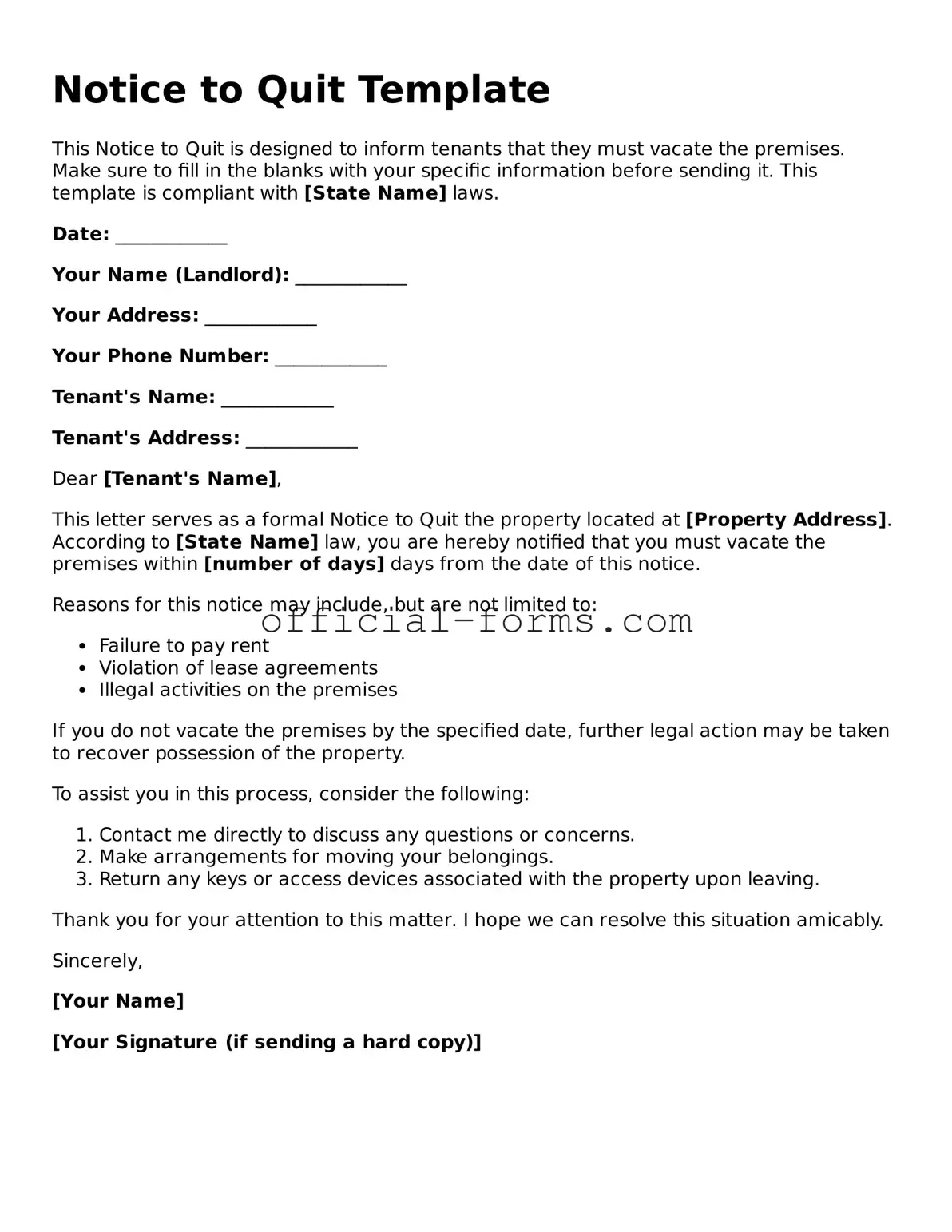When it comes to the landlord-tenant relationship, clear communication is key, especially when it involves ending a lease. One essential tool in this process is the Notice to Quit form. This document serves as a formal notification to a tenant, indicating that they must vacate the rental property by a specified date. It’s important to understand that this form is not just a simple request; it outlines the reasons for termination, whether due to non-payment of rent, lease violations, or other grounds permitted by law. Additionally, the Notice to Quit must comply with state-specific requirements, such as the amount of notice given and the manner in which it is delivered. Failure to follow these guidelines can lead to complications in the eviction process. By utilizing this form correctly, landlords can ensure they are taking the necessary legal steps to reclaim their property while also protecting their rights and interests. Understanding the nuances of the Notice to Quit form can empower both landlords and tenants, fostering a more transparent and respectful rental experience.
